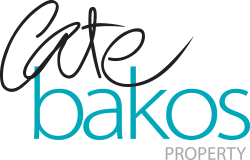When we facilitate our strategy session with our new investor clients, we spend time discussing the importance of criterion. Any past client could cite me including ‘proximity to train station’ as a must-have criteria for a good investment property. And those who quiz me about locations in a public transport ‘blackspot’ will get my all-too-familiar “nope, it doesn’t have a train or tram.”
It doesn’t mean that the area isn’t lovely and liveable.
It just means that the tenant who opts for the easy public transport commute to work won’t favour that particular property.
Now, more than ever before Melbourne’s dramatic population growth boom raises the necessity of this criteria because our roads are becoming more congested by the day, commuters are living further out of the city, and people value their own time at home.
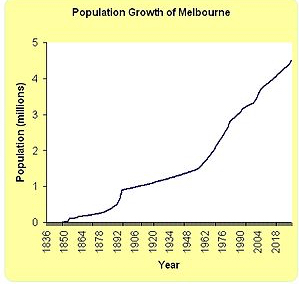 Considering our population growth figures, and where Melbourne’s population is growing is interesting. Our city is home to 4.8 million people; and just over 19% of our entire national head count. The growth chart here (sourced from Wikipedia) certainly sheds light on why our roads feel like car parks during peak hour, and passengers describe train carriages as sardine tins.
Considering our population growth figures, and where Melbourne’s population is growing is interesting. Our city is home to 4.8 million people; and just over 19% of our entire national head count. The growth chart here (sourced from Wikipedia) certainly sheds light on why our roads feel like car parks during peak hour, and passengers describe train carriages as sardine tins.
Despite the fact that a whopping 74.4% of Melbourne’s workers travel to work by car, the increased patronage on train lines since 2011 has also been growing steadily at an overall figure of 27% in this seven year period.
Taking into account how congested our roads are now, it goes without saying that commuters will continue to turn to alternative methods of transport as things worsen.
These satellite pictures below of Melbourne show the dramatic increase in urban sprawl spanning the years 1985, 2000 and 2016.
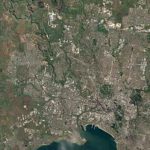
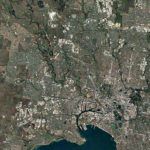

Our State Government has initiated some interesting rail projects, upgrades and new services based on the demand. One of the busiest lines in our network is the Cranbourne/Pakenham line and this is of little surprise when we focus on the urban growth rate of the South East Corridor including suburbs such as Narre Warren, Cranbourne and Pakenham. Other outer suburban growth locations both north and west have certainly experienced their fair share of growth and will continue to do so, with overseas migration into the north and west dominating new births and local migration.
The pie chart below shows Melbourne’s population growth percentages over the past year by category.
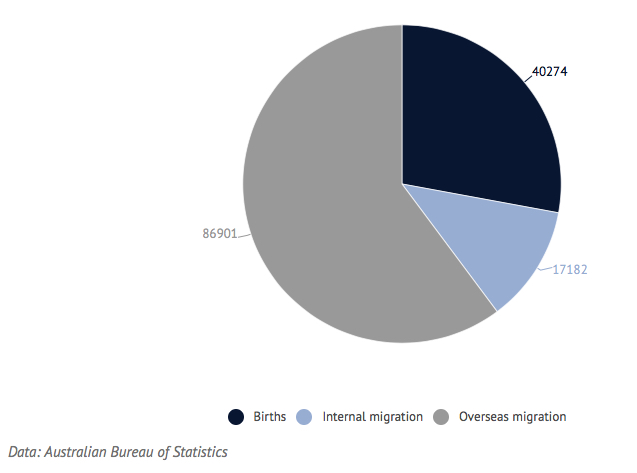
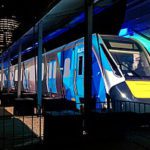 Setting aside urban expansion for a moment though, we also have to pay attention to commuter travel in the inner and middle-ring locations also. Our Metro Tunnel project is just one current initiative to improve our rail services and free up some of the lines carrying passengers into, and out of the city as they commute from line to line. The busiest line (Cranbourne/Pakenham) is claimed to be able to deliver 45% more peak-capacity once the Metro Tunnel launches. Other capital improvements include the purchase of a fleet of HCMT’s (High Capacity Metro Trains) that will not only carry significantly larger numbers of passengers than our current commuter trains do, but will offer modern functions such as interactive travel maps and are tipped to deliver a smoother ride. The trains are scheduled for operation next year and are the target option for 2025 when the Metro Tunnel project rolls out.
Setting aside urban expansion for a moment though, we also have to pay attention to commuter travel in the inner and middle-ring locations also. Our Metro Tunnel project is just one current initiative to improve our rail services and free up some of the lines carrying passengers into, and out of the city as they commute from line to line. The busiest line (Cranbourne/Pakenham) is claimed to be able to deliver 45% more peak-capacity once the Metro Tunnel launches. Other capital improvements include the purchase of a fleet of HCMT’s (High Capacity Metro Trains) that will not only carry significantly larger numbers of passengers than our current commuter trains do, but will offer modern functions such as interactive travel maps and are tipped to deliver a smoother ride. The trains are scheduled for operation next year and are the target option for 2025 when the Metro Tunnel project rolls out.
Many services in both morning and afternoon peak around Melbourne (and to our regional cities) are carrying passenger numbers “above capacity”, meaning that the crowded nature of the trains are causing discomfort for commuters and delaying the embarkation/disembarkation time frames at stations. The requirement for service upgrades is completely clear, and increasing patronage numbers are reflecting our State Government’s willingness to spend.
With forecast population growth figures signalling the potential for Melbourne to outgrow Sydney, a key focus absolutely needs to be applied to commuter travel and the infrastructure required to support our growing city.
Whether we like our loathe our train system, it is improving, it is in focus, and patronage will continue to increase.
Having the option to catch the train to work will become a highly desirable benefit as time ticks on.
